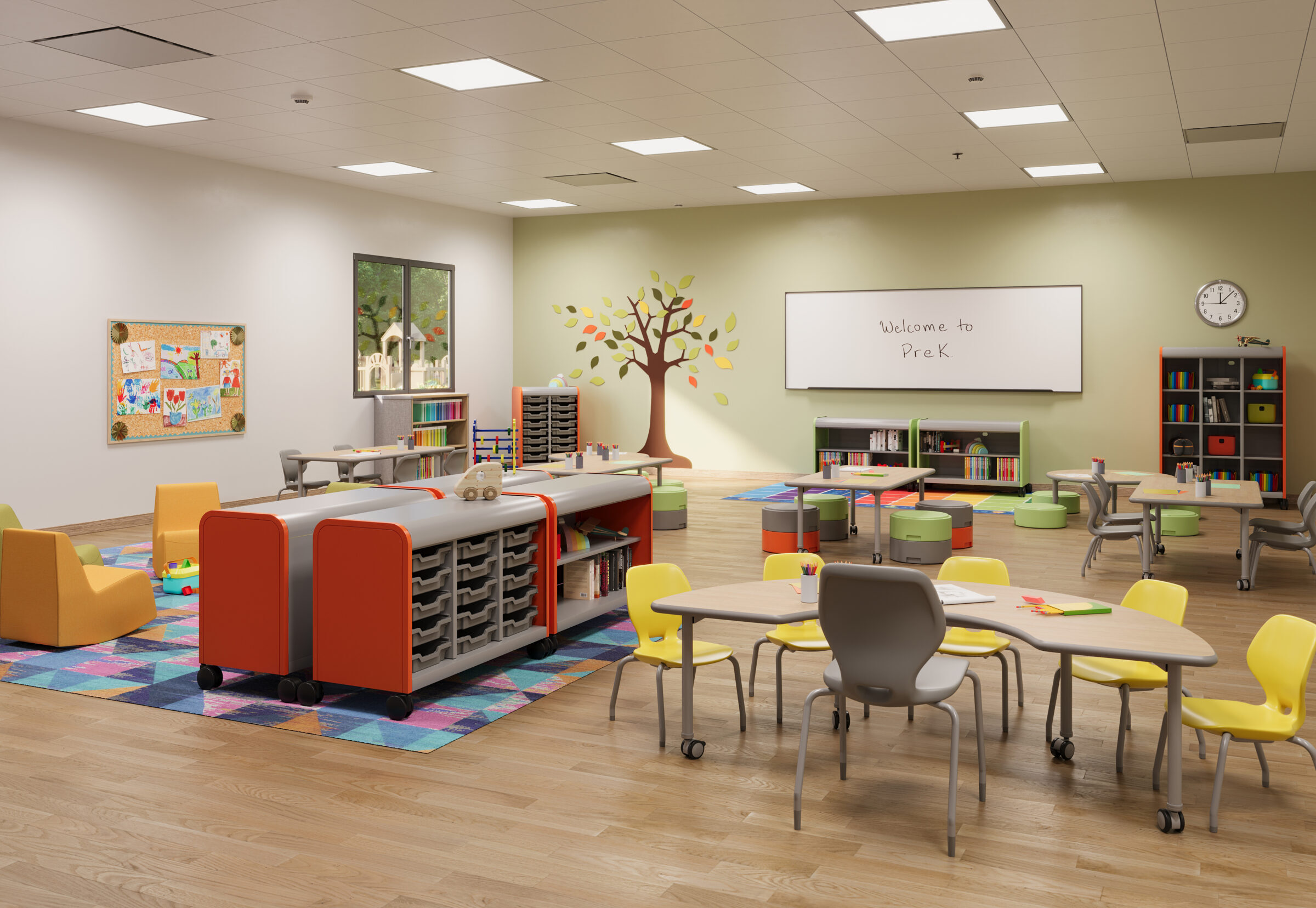Early Childhood
For every student, the first days are the most important. Aim to create the kind of environment that welcomes the student, stimulates learning and facilitates the teacher’s lesson plans.
The role of furniture in a nurturing early childhood environment
PreK-3 students are especially sensitive to their environment to the extent their behavior is often cued by the space and surroundings. Early childhood furniture goes a long way toward creating an environment that is both welcoming and appropriately stimulating for early learners. Designers at Smith System® learned long ago that there’s more to effective early childhood school furniture than simply scaled-down elementary classroom furniture. View our Classroom Furniture Height Guide.
Welcoming early learners, directing their energy
Outfitting a PreK-3 classroom with appropriately scaled furniture is a must. This first step not only removes a barrier to learning and facilitates concentration and interaction, but it also makes the students feel comfortable in the surroundings and builds their self-esteem by making them feel the room is designed for their needs. Smith System offers a wide array of choices – all appropriately scaled for early childhood students.
Shape, another design element of early childhood furniture, also subtly communicates a message of familiarity and comfort to students, spoken through soft curves and gentle angles, a message that welcomes students to the classroom.
Finally, color helps engage the students. Recent studies show that primary colors are most appropriate for early childhood students, and don’t provide too much stimulation to PreK-3 learners, as can be the case for older students.



Defining spaces and activities
In an early childhood classroom, furniture like tables and low-rise shelving creates spaces that help manage the students. Again, the furniture has to be appropriately scaled, so that the teacher can see students throughout the room. Breaking up the room into zones not only gives a sense of coziness to the environment, but the smaller spaces also exert a passive form of control and deter running and rough play.
In addition to a meeting area that can accommodate all students, early childhood classrooms are often broken into art/writing, blocks, dramatic play, math/science, language/literacy, science, and music areas. Because of the prevalent use of manipulatives, storage should be also be considered when evaluating needs for early childhood classroom furniture.

Choose quality PreK-3 furniture for your environment
When choosing new furnishings for your early educational environment, check the warranty. Many manufacturers offer a one-year limited warranty. Because we know our product will stand up to today’s classroom, we offer a lifetime warranty on frames and legs and a 12-year warranty on tables and desktops. Expect a warranty that reflects confidence in the product line from the manufacturer.










